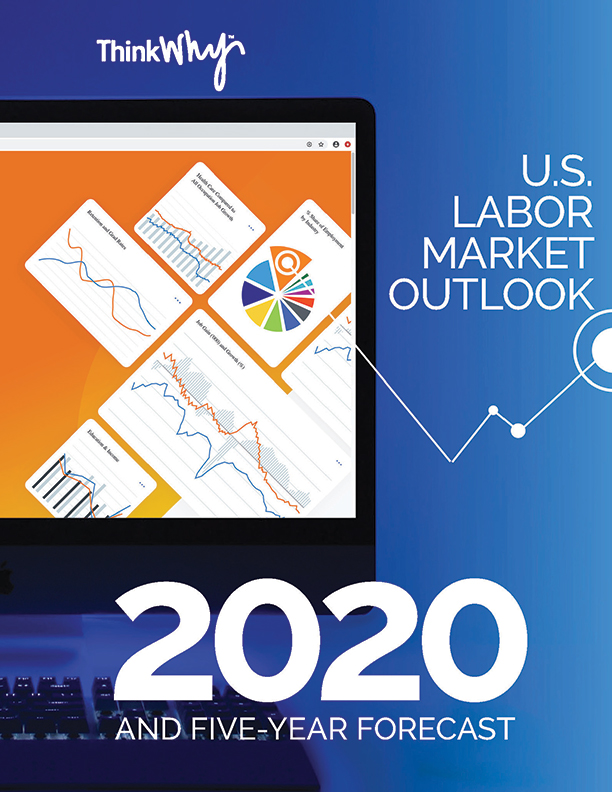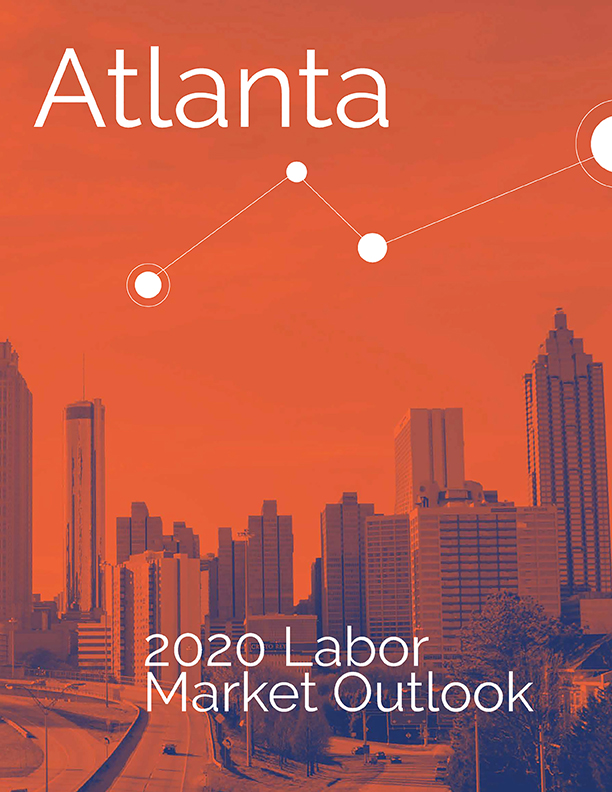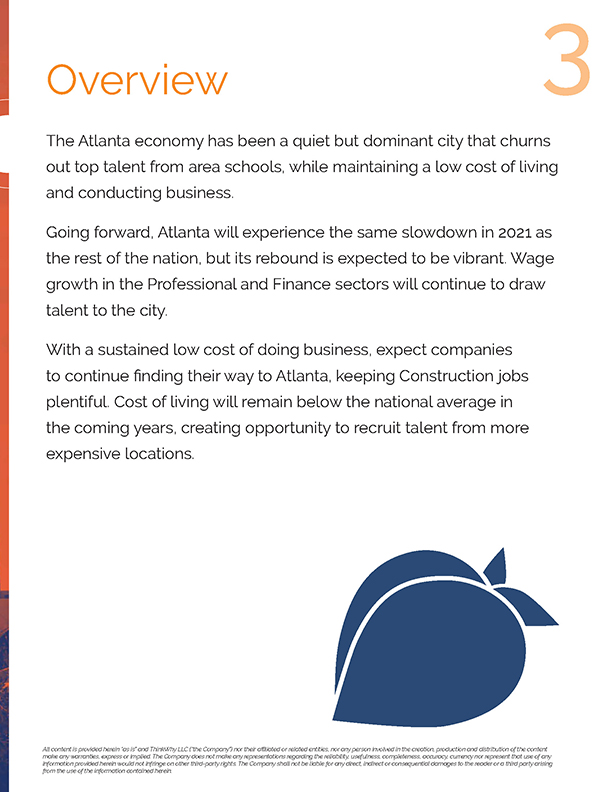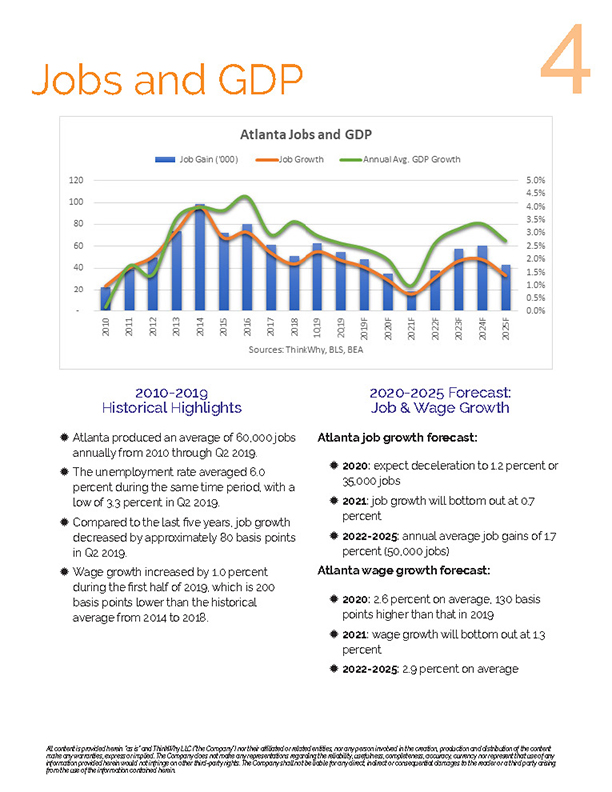



Exexutive Summary
ThinkWhy is helping companies navigate a new era of work by creating modern, human-centered solutions that drive alignment between labor economics and business strategy.
The 2020 Labor Market Outlook is intended to help businesses better understand economic impact, reduce risk and drive informed growth planning.
ThinkWhy’s summary of the current state of the economy and our outlook is based on rigorous analysis of broad economic and fundamental market indicators, and the metrics that drive the labor market.
To help guide strategic business decisions, ThinkWhy covers key economic variables and their drivers.
- Job growth by industry
- Wage growth by industry
- Consumer sentiment
- Personal consumption expenditures (CPE)
- Corporate profit growth
- Household real estate equity
- Population changes by age
- Labor force participation by gender
- Birth rate and education
While the forecast for U.S. job growth sets the tone for the economy, industry job growth will impact businesses. Robust job growth indicates an expanding industry and can represent a tight labor market, and therefore, a reduced talent supply. Conversely, below average job growth typically represents a slowing industry and organizations may need to allocate resources toward training, upskilling and automating workflows.
The ThinkWhy 2020 Outlook provides job growth forecasts within specific industry sectors which will have impact on budgets and business hiring decisions. Consumer spending trends indicate the public’s consumption confidence and provides early indicators as to the overall shape of the economy.
With the unemployment rate at an almost 50-year low, there could be impact on industry wage growth over the next five years. There are a few scenarios to consider as you plan and budget for 2020, including how salary increases compare to industry averages and the rate of payroll growth.
Economic Factors Impacting Trends
- Consumer Sentiment: Trending Down
- Personal Consumption Expenditures: Trending Down
- Corporate Profits Growth: Trending Down
- Household Real Estate Equity: Trending Down
- Older Workers Remaining in Workforce: Trending Up
- Female Labor Force Participation: Trending Up
- Fastest Job Growth: Leisure and Hospitality
- Slowest Job Growth: Government
- Fastest Wage Growth: Leisure and Hospitality
- Slowest Wage Growth: Other Services
In conclusion, ThinkWhy’s five-year forecast indicates the U.S. will show moderate economic growth for the remainder of 2019 and 2020, bottom out in 2021, and then return to a period growth through 2025. Job growth will trend downward, moving from 1.5 percent in 2019 to 1.0 percent in 2020.
Executive Summary

